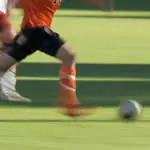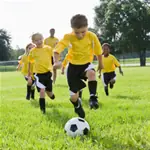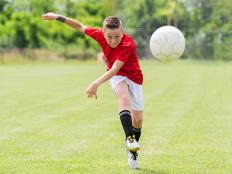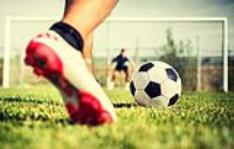
There are a number of questions regarding activities and suggestions on the concept of speed, lateral speed and agility. Here are 10 common questions, and some helpful tips to keep in mind as you start your speed training.
1. How often should this type of training be done? If high school or college, then some of these activities should be done four days a week: two days, a day off, then two more days. Club teams that only meet twice a week should do a little of each when training, but players should be encouraged to do some on their own two more times a week.
2. You mean speed/acceleration and lateral speed/agility each workout? Probably should plan on two days for each, say, Monday and Thursday for speed/acceleration and Tuesday and Friday for lateral speed/agility. If twice a week, then a little of each when training.
3. Is there a preferred time in a practice? As these activities teach technique and footwork, training should be early in practice. A fatigued player will not be able to perform the skills properly.
4. Should speed training be done all year? Probably not. Early offseason training is usually low intensity and high volume. So speed training should begin closer to arrival to preseason training and during the season.
5. How many exercises? Variety is a good idea, so select four to eight drills per practice and rotate activities each session.
More on Soccer Speed Training
6. Should everybody do these? Absolutely. Dont pigeonhole players according to position.
7. These are short-length activities. What should the work:rest ratio be and what should be done during recovery? This training is for running technique, not fitness, per se. So allow recovery to occur. A ratio of 1:3 should be the minimum with full recovery the goal. This is not used to improve endurance via interval training. During recovery, the players can stretch or do individual ball skills. Standing around only leads to mischief, as coaches well know.
8. Can a few days/weeks be taken off? Not a good idea. Repetition is important. There is a training concept called reversibility more commonly called "use it or lose it."
9. At what age should training like this be added? Probably around middle school age. Younger players need skill time more than this.
10. Any suggestions for game day? Warm-up for competition should prepare the athlete for what is coming, and that includes some high-speed running. A series of five or six short sprints in the final five minutes or so before kickoff is advised.
Some comments to keep in mind:
- Train when rested so proper technique is learned.
- Demand correct mechanics. The Vince Lombardi quote is the goal: "Practice doesnt make perfect; perfect practice makes perfect."
- Top speed is not the goal. The optimum speed that one can control is the goal, so that changes in speed or direction can be executed without having to "run around" the cut.
- Improvement in speed requires both motivation and concentration.
- A take-off begins with a controlled fall (lean at the ankles), not a lead with the head and shoulders (bend at the waist).
- Don't forget the arms. Arms initiate the movement. The bigger the arm swing, the more force applied to the ground.
- Short first steps get up to speed faster, much faster than big first steps.
- Extend, at the ankle, the knees and the hips for the best push against the ground.
- To slow down, absorb shock by the hips, knees and ankles. Do not try to stop with one step. Lowering the body absorbs shock better with less risk of injury.
- Once these skills have been practiced, they must be applied at game speed. So plan activities that will force game-related speed later in the practice so players can practice these new skills at speed.
- Stress anticipation of actions so players can learn to react faster to either the ball or other players.
Good luck! Here's to players using their new speed to the teams advantage.









Discuss This Article